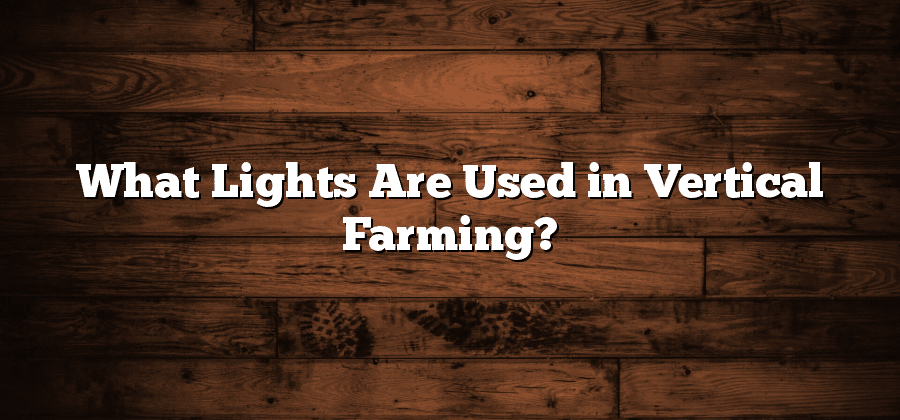Fluorescent Lights: An Overview
Fluorescent lights are a popular lighting choice in various applications, including vertical farming. These lights consist of a long tube filled with mercury vapor and an inner coating of fluorescent powder. When an electric current passes through the tube, the mercury vapor emits ultraviolet light, which then excites the fluorescent powder, causing it to emit visible light.
One of the key advantages of fluorescent lights is their energy efficiency. Compared to traditional incandescent bulbs, fluorescent lights consume significantly less electricity while providing the same level of brightness. This energy efficiency not only helps reduce electricity costs but also contributes to the overall sustainability of vertical farms. Additionally, fluorescent lights have a longer lifespan, which means they require less frequent replacement, leading to further cost savings. Overall, these lights offer a reliable and economical lighting solution for vertical farming systems.
Advantages of LED Lights in Vertical Farming
LED lights have become increasingly popular in vertical farming due to their numerous advantages. One of the standout benefits is their energy efficiency. LED lights are known for their ability to convert a greater percentage of electricity into light, resulting in significant energy savings compared to traditional lighting options. This not only reduces operational costs but also promotes sustainability and environmental consciousness in vertical farming systems.
Another advantage of LED lights is their longevity. LED bulbs have a much longer lifespan compared to other types of lights, allowing for extended use without frequent replacements. This not only reduces maintenance costs but also minimizes disruptions to the growth cycle of plants. The durability and resistance of LED lights to shocks, vibrations, and temperature fluctuations further enhance their reliability, making them well-suited for the demanding conditions of vertical farming environments. Additionally, LED lights emit little to no heat, ensuring a controlled and optimal temperature for plant growth, while also reducing the risk of fire hazards.
High-Intensity Discharge (HID) Lights: A Closer Look
High-intensity discharge (HID) lights are a popular choice among vertical farmers due to their powerful lighting capabilities. These lights consist of a gas-filled chamber and work by creating an electrical arc that excites the gas molecules, producing a bright and intense light. One of the key advantages of HID lights is their ability to emit a wide spectrum of light, including both visible and ultraviolet wavelengths. This feature is particularly beneficial for plants as it allows for better photosynthesis and overall growth.
HID lights are available in two main types: metal halide (MH) and high-pressure sodium (HPS) lights. Metal halide lights are known for their cool white light, which closely resembles natural sunlight. This makes them a suitable choice for the vegetative stage of plant growth, as they promote sturdy stem development and leaf production. On the other hand, high-pressure sodium lights emit a warm orange-red light that is ideal for the flowering and fruiting stages. They enhance the production of flowers and fruits, making them essential for vertical farmers who focus on cultivating crops that require optimal reproductive growth.
The Role of Metal Halide Lights in Vertical Farming
Metal halide lights have become an essential component in the world of vertical farming. These lights emit a bright, white light that closely resembles natural sunlight, making them ideal for stimulating plant growth. With their high light intensity and broad spectrum, metal halide lights provide plants with the necessary wavelengths for photosynthesis, promoting healthy and vigorous growth throughout the farming process.
One of the key advantages of metal halide lights is their ability to provide plants with the appropriate amount of blue light. Blue light is crucial for promoting compact and bushy plant growth by encouraging the production of chlorophyll and regulating plant hormone levels. Additionally, metal halide lights contribute to the overall health and quality of plants by enhancing leaf expansion, internode elongation, and root development. This makes them particularly effective for growing leafy greens, herbs, and seedlings in vertical farming systems.
Compact Fluorescent Lights (CFLs) in Vertical Farms
Compact Fluorescent Lights (CFLs) have gained popularity in vertical farming due to their energy efficiency and affordability. These lights consist of a phosphor-coated glass tube filled with a low-pressure mixture of mercury vapor and argon gas. When an electric current is applied, the gas emits ultraviolet (UV) light, which then strikes the phosphor coating, resulting in the emission of visible light.
One of the main advantages of CFLs in vertical farms is their low energy consumption. Compared to traditional incandescent lights, CFLs use up to 75% less energy, making them not only more environmentally-friendly but also cost-effective. The lower energy consumption of CFLs also means less heat produced, reducing the need for additional cooling systems in vertical farms. Additionally, CFLs have a relatively long lifespan, further reducing the maintenance and replacement costs for vertical farmers.






